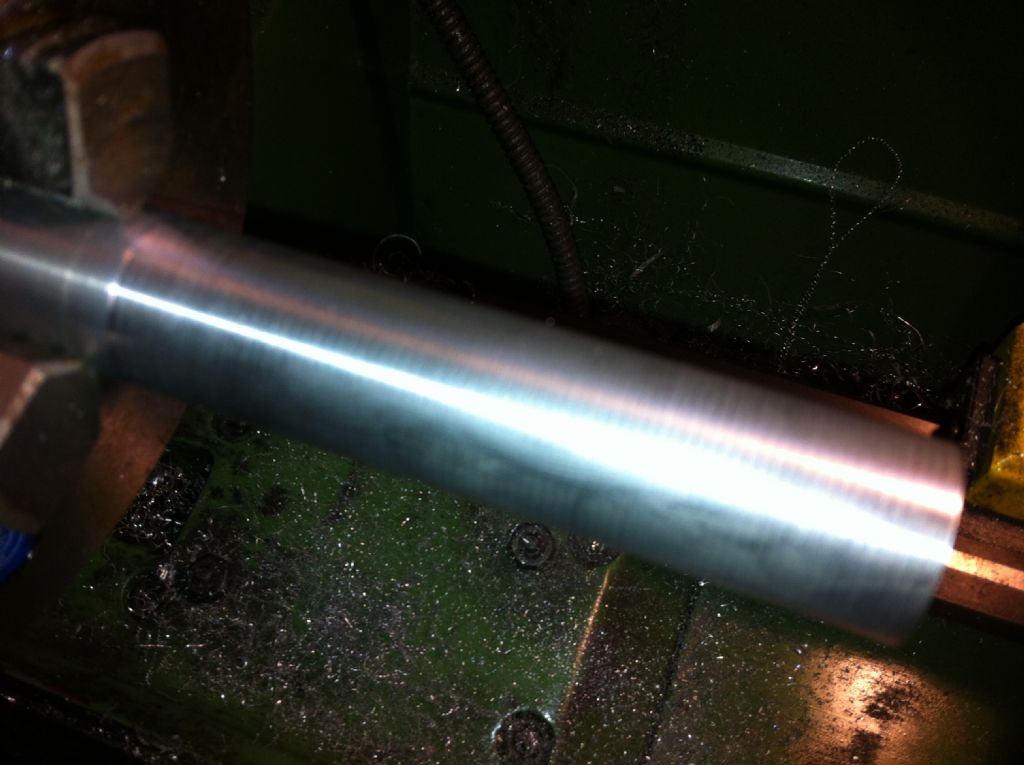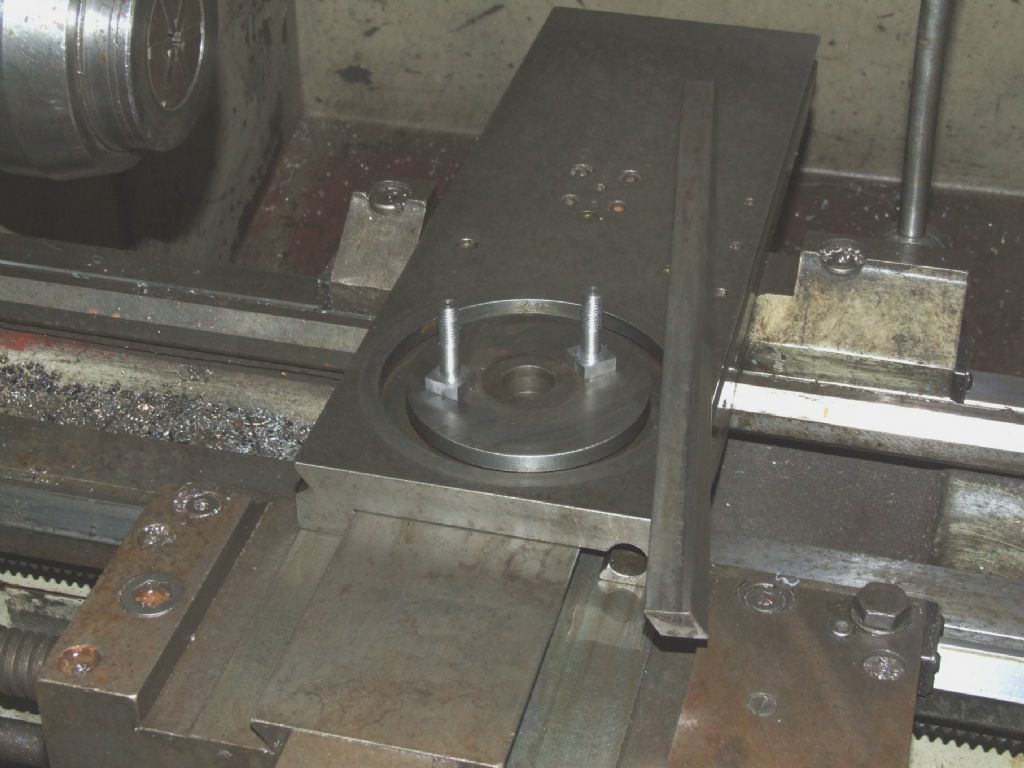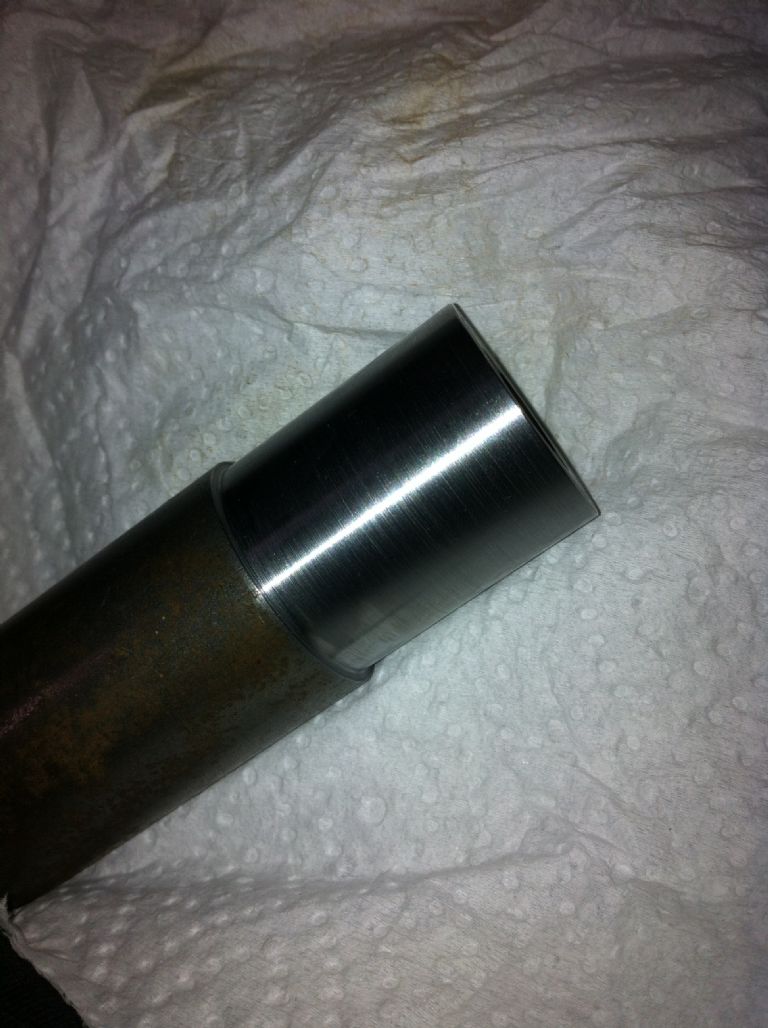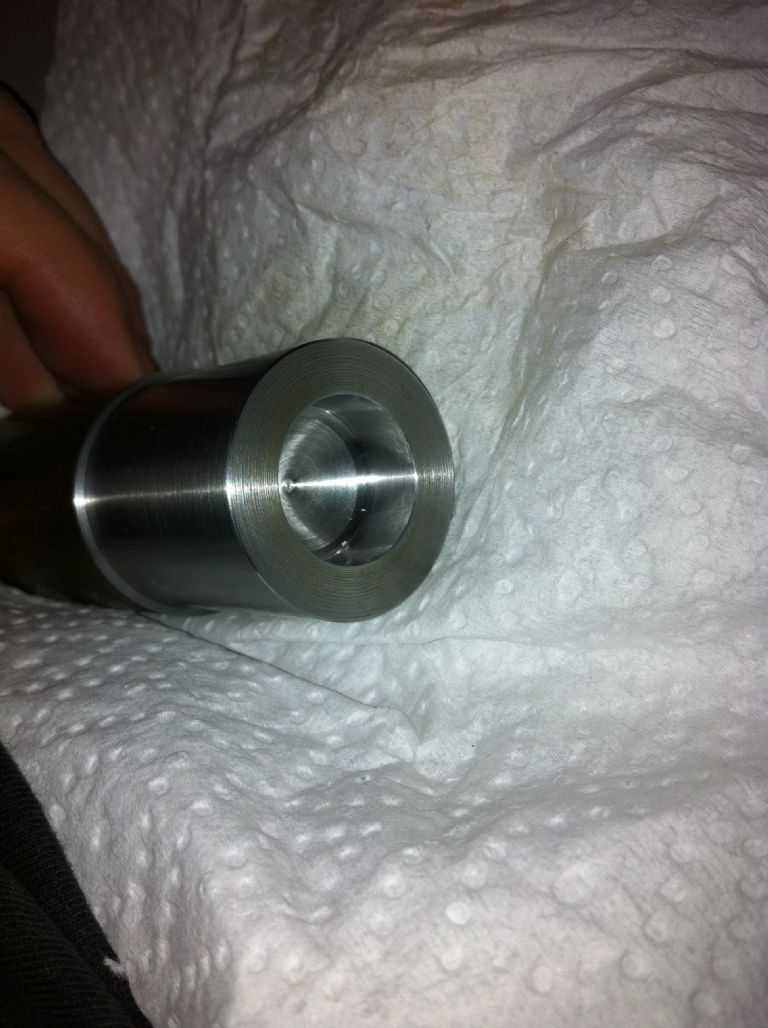Hello Andy
The problem you have was one of many faults i had with a new Warco 1330 lathe that i bought from them several years ago, and it is not uncommon. The lathe shown in your link has the same apron as mine, so i assume your lathe does too, but if not the cause may still be the same.
You will find that the pitch of the banding is the same as the distance the carrage travels for every revolution of the feed shaft when longitudinal power feed is engaged. Behind the apron the feed shaft passes through a cast iron trough integral with the apron, the trough side walls are bored to support the feedshaft.
Inside this trough sits the steel worm gear, with the feedshaft passing through it, and this worm meshes with and drives a bronze worm wheel above it. Two or three faults can often be found here that can cause the banding, and you may have one or more.
The bores in the trough side walls can be oversize allowing the feedshaft to roll around as it rotates, taking the worm gear with it. The worm gear can also have a bore that is eccentric to its teeth, this gear can also be a sloppy fit on the feed shaft.
These faults cause the worm gear to go in and out of mesh slightly with the bronze worm wheel when power feed is used, so the carrage does not travel at a constant rate. It is a little hard to imagine this having much affect on the surface finish, but it does, and can show up even worse on softer metals such as aluminium and bronze.
One of my photo albums includes some of what i did to cure this problem. I also had to mount the worm gear on a mandrel and reskim the gear teeth concentric to the bore, there is not quite enough room to bore it out and bush it.
It does not matter what feedrate you select, the carrage always travels the same distance per revolution of the feedshaft, so the pitch of the banding is always the same. The banding will show up more the finer the feedrate and the better the cutting tool.
Hope this helps.
Edited By Lathejack on 15/04/2013 01:05:02
Edited By Lathejack on 15/04/2013 01:16:26
Edited By Lathejack on 15/04/2013 01:20:39
Sub Mandrel.





 is that one for auto feed, one for metric and one for imperial?
is that one for auto feed, one for metric and one for imperial?




